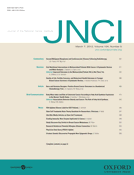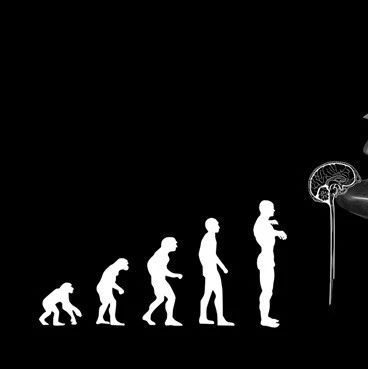导读:两篇发表于3月2号《国家癌症研究期刊》(the Journal of the National Cancer Institute)的研究论文认为:暴露于重型内燃机车尾气的人会增加因肺癌死亡的风险。

从1980年代开始,研究人员就开始调查暴露于内燃机车尾气和肺癌之间可能存在的因果联系。在1989年,国际癌症研究署(IARC)把内燃机车尾气列为可疑致癌物。
为了确定暴露于内燃机车尾气同因肺癌死亡风险之间的关联,西弗吉尼亚摩根敦前国立职业安全与卫生研究所Michael D. Attfield博士和国家癌症研究所理学博士Debra T. Silverman及其同事对八个地下非金属采矿设施的12,315位工人实施了一项队列研究,也被称作内燃机车尾气在在矿工(中的影响)研究。他们收集这些工人的信息,从工人被介绍到每一个内燃机作为能源来源设备的矿场(1947-1967年)工作开始,直到1997年12月31号随访结束为止。研究人员测定每位工人的吸收碳元素(REC)作为暴露于内燃机车尾气程度的替代指标,他们分析了各种来源的数据,包括1998-2001年间在每个设施处的柴油车尾气暴露调查数据,依靠美国矿山安全和卫生行政煤矿信息数据分析系统数据库获得的数据,以及随着时间的推移每个设施处柴油机设备的使用情况和具有一定历史年限的通风矿井的相关数据。
研究人员发现长期从事地下作业的矿工吸入碳元素(REC)增加与肺癌发病风险增加之间具有显著的统计学差别。同时也有一些证据表明地面作业工人长期暴露于高水平REC环境其罹患肺癌的风险也会增加。而暴露于其他工作场所,比如二氧化硅、石棉、非内燃机车气体排放相关的多环芳烃、吸入粉尘和氡气则很少或无这种所发现的影响效应。
该项研究的领衔作者Silverman和她的同事们进行了另外一项研究——在198位工人中肺癌死亡的巢式病例对照研究,在最初的研究中也在这些工人中得出同样的队列研究结果。在这项巢式病例对照研究中,研究人员也发现随着暴露程度而导致REC增多的同时肺癌的死亡率也会有显著的统计学意义上的升高,尽管这些死亡病患生前已经改掉吸烟的坏习惯、也不再从事肺癌高发风险的职业或者仅仅只是良性的呼吸系统疾病。
Silverman论文中这样写道:我们的研究结果不仅仅对于矿工有重要意义,同样对于暴露于内燃机车尾气的广大140万美国工人以及300万欧洲工人甚至全世界范围内的城镇人口也有重要意义。考虑过去数十年里其他一些城市,例如美国墨西哥城、葡萄牙Estarreja以及中国的九个城市中心,这些城市曾经报道内燃机车尾气暴露程度与该项研究中一些地下作业工人中较低阈值的内燃机车尾气暴露程度是相当的。
Silverman接着写到:“因为这样的工人至少会增加50%的肺癌罹患率,而且我们的研究结果也提示一些城市区域高密度的含碳元素空气可能有助于增加肺癌的发生,因此,如果内燃机车尾气与肺癌之间确实存在某种因果联系,那么这种工人中吸入致癌的内燃机车尾气以及在高水平内燃机车尾气生活的城镇人口所带来的一系列相关公共卫生负担将变得非常之重。”
Silverman和她的同事们也同时指出他们研究当中的一些局限性,像研究工作前后对工人危险暴露信息和回顾性暴露评估依然不是太准确,同时某些生活方式的落实,比如吸烟,也都是从最近的亲戚那里获取的,而非从本人直接获得。
在一篇相伴随的社论中,伦敦帝国大学的Lesley Rushton博士这样写道:这相当尖锐地提出低水平内燃机车尾气暴露的风险,迫使“为内燃机车尾气暴露而制定严格的职业标准和特别的环境保护标准”。她总结道:要增加通风和定期的汽车保养,限制在机动车内的作业时间,同时当机动车不使用时关闭引擎。此外,减少总环境中碳的排放量也是迫在眉睫的挑战。Rushton博士还这样写道:“如果多数人不为自己的健康有所让步的话,那么这种减排的必要性就变得更加显而易见,也更加重要。”

 The Diesel Exhaust in Miners Study: A Nested Case–Control Study of Lung Cancer and Diesel Exhaust
The Diesel Exhaust in Miners Study: A Nested Case–Control Study of Lung Cancer and Diesel Exhaust
Debra T. Silverman, Claudine M. Samanic, Jay H. Lubin, Aaron E. Blair, Patricia A. Stewart, Roel Vermeulen, Joseph B. Coble, Nathaniel Rothman, Patricia L. Schleiff, William D. Travis, Regina G. Ziegler, Sholom Wacholder and Michael D. Attfield
Background Most studies of the association between diesel exhaust exposure and lung cancer suggest a modest, but consistent, increased risk. However, to our knowledge, no study to date has had quantitative data on historical diesel exposure coupled with adequate sample size to evaluate the exposure–response relationship between diesel exhaust and lung cancer. Our purpose was to evaluate the relationship between quantitative estimates of exposure to diesel exhaust and lung cancer mortality after adjustment for smoking and other potential confounders.
Methods We conducted a nested case–control study in a cohort of 12 315 workers in eight non-metal mining facilities, which included 198 lung cancer deaths and 562 incidence density–sampled control subjects. For each case subject, we selected up to four control subjects, individually matched on mining facility, sex, race/ethnicity, and birth year (within 5 years), from all workers who were alive before the day the case subject died. We estimated diesel exhaust exposure, represented by respirable elemental carbon (REC), by job and year, for each subject, based on an extensive retrospective exposure assessment at each mining facility. We conducted both categorical and continuous regression analyses adjusted for cigarette smoking and other potential confounding variables (eg, history of employment in high-risk occupations for lung cancer and a history of respiratory disease) to estimate odds ratios (ORs) and 95% confidence intervals (CIs). Analyses were both unlagged and lagged to exclude recent exposure such as that occurring in the 15 years directly before the date of death (case subjects)/reference date (control subjects). All statistical tests were two-sided.
Results We observed statistically significant increasing trends in lung cancer risk with increasing cumulative REC and average REC intensity. Cumulative REC, lagged 15 years, yielded a statistically significant positive gradient in lung cancer risk overall (Ptrend = .001); among heavily exposed workers (ie, above the median of the top quartile [REC ≥ 1005 μg/m3-y]), risk was approximately three times greater (OR = 3.20, 95% CI = 1.33 to 7.69) than that among workers in the lowest quartile of exposure. Among never smokers, odd ratios were 1.0, 1.47 (95% CI = 0.29 to 7.50), and 7.30 (95% CI = 1.46 to 36.57) for workers with 15-year lagged cumulative REC tertiles of less than 8, 8 to less than 304, and 304 μg/m3-y or more, respectively. We also observed an interaction between smoking and 15-year lagged cumulative REC (Pinteraction = .086) such that the effect of each of these exposures was attenuated in the presence of high levels of the other.
Conclusion Our findings provide further evidence that diesel exhaust exposure may cause lung cancer in humans and may represent a potential public health burden.







